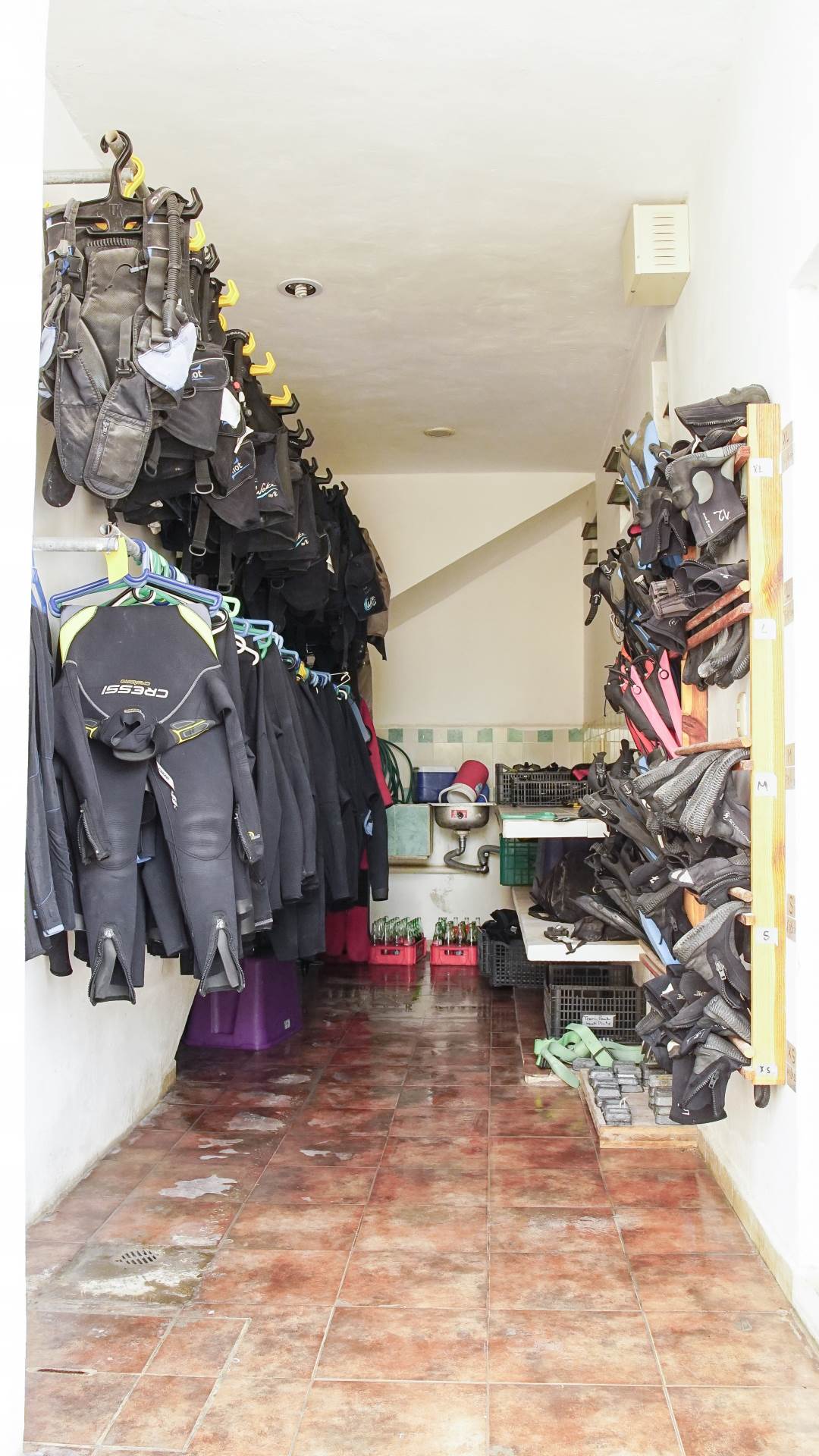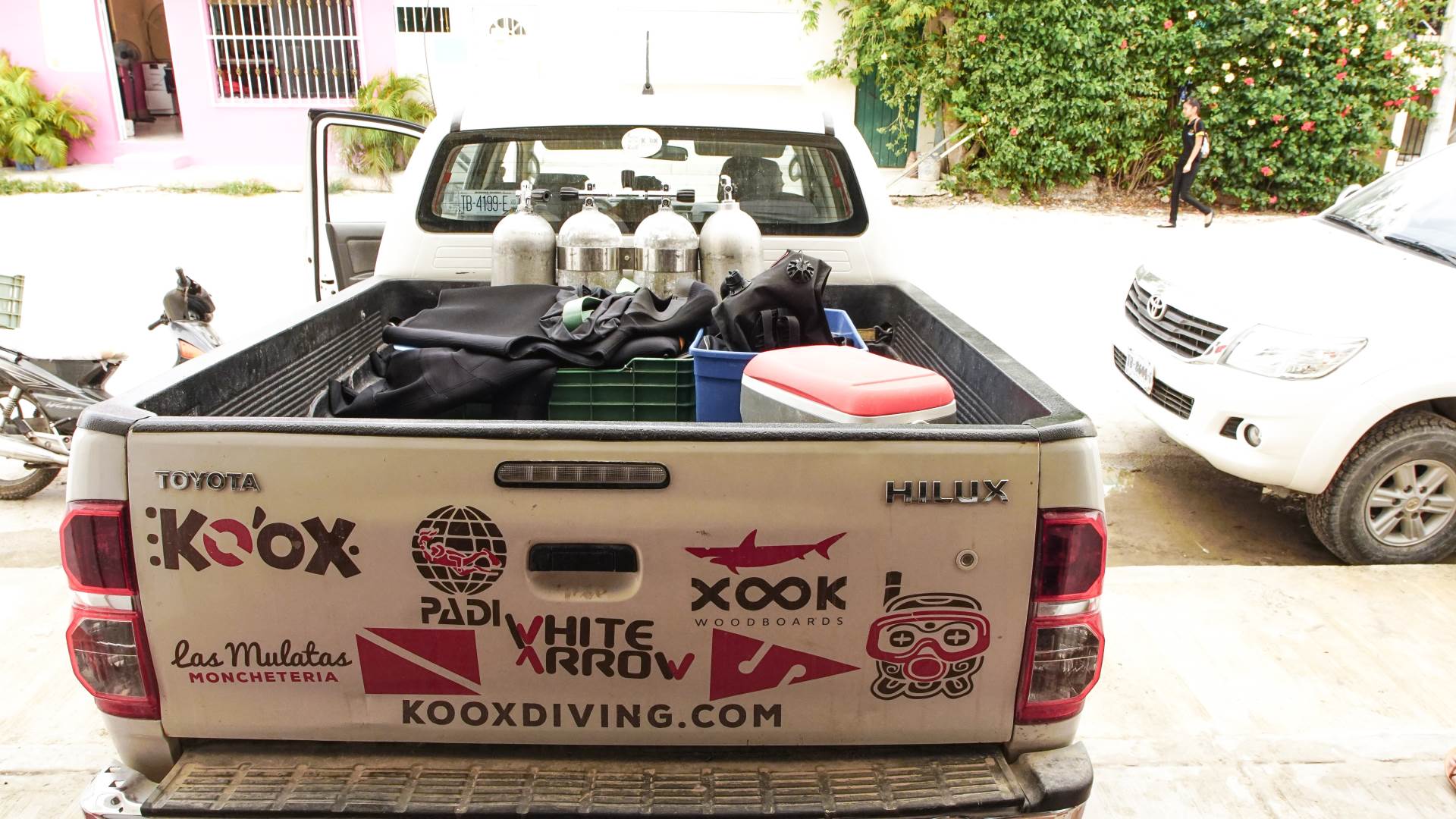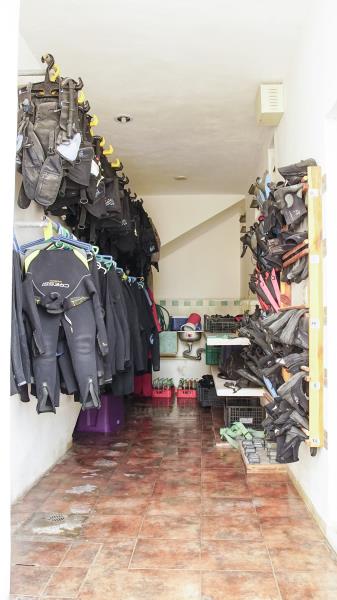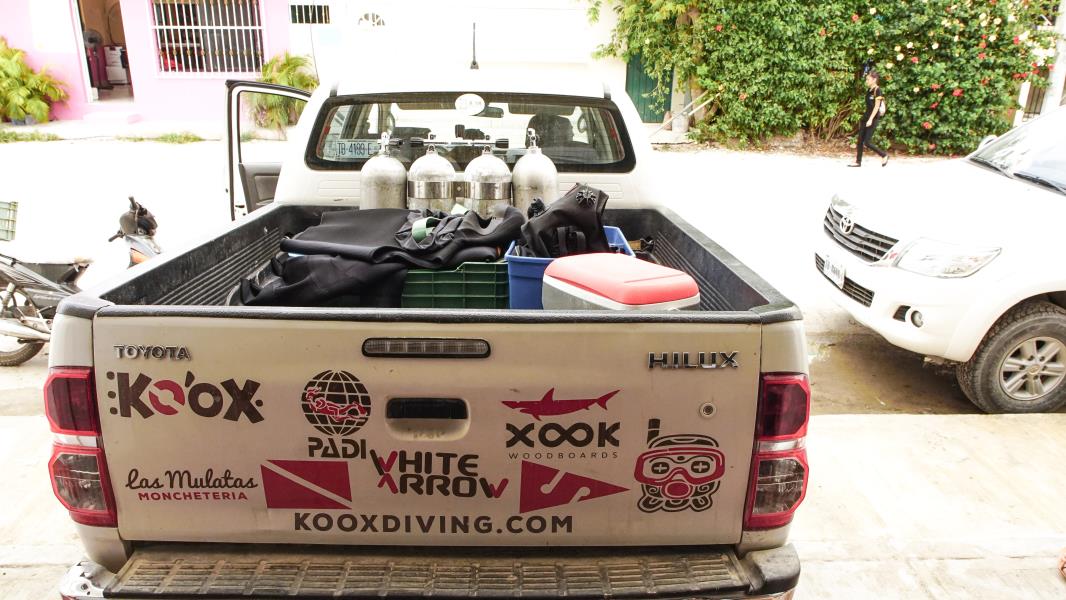-

Wet suits at Koox Diving shop in Tulum
-

Koox Diving Gear
 published by Koox Diving
published by Koox Diving
 written by Koox Diving
written by Koox Diving
A simple clean and rinse with warm fresh water is the absolute minimum you should take care to do after each dive. But each piece of your kit needs some proper attention if you want it to last long into the future. Here's a beginner's guide to scuba gear maintenance:
1) Look after your mask
Your mask is pretty simple to clean. Use fresh warm water to rinse it (making sure to submerge it fully). You can use a small cleaning pad or - better yet - a toothbrush to give it a proper scrub.
You'll see a lot of people who are snorkelling in Tulum, Florida, France and all the other top cave diving sites in the world spit into their mask to clean it… But you won’t see the people who actually know how to care for their equipment do it.
Not only does spitting into your mask look particularly grimy, but the bacteria in human spit will really enjoy being in the rubberised rim of your mask. Over time, this will make it smell far from welcoming.
If you need something to clean your mask with, consider baby shampoo. It won't harm your eyes, it's cleansing and it's very cost-effective.
2) Wash your wetsuit
Leaving your wetsuit without care after a dive is a sure-fire way to not only make it begin to smell terrible over time, but also to allow it to break down, meaning you'll soon need a new one.
When cleaning your wetsuit in warm fresh water, be sure to:
-
Wash inside as well as outside (turn it inside out so everything gets cleaned)
-
Really rub and knead (like you're making bread) those joints and other bits - like under the arms - which it can be easy to miss when they're under the water
Afterwards, let your wetsuit dry by hanging it up. But don't use a coat hanger to hang your suit from the shoulders in the way you normally would. Leaving it like this for the amount of time it takes to dry will distort the suit's shape.
Instead, fold your suit in the centre and hang it through the hoop of the coat hanger (making sure the hanger is not a metal one). Then, once it’s dry, turn it inside out and hang again to dry the inner surface.
it inside out and hang again to dry the inner surface.
3) Care for your BCD (Buoyancy Control Device)
The combination of salt water and sand can seriously damage your BCD if you leave them in contact for too long between diving sessions. Every time you finish a session, you will need to:
-
Drain your BCD fully
-
Submerge it in a rinse tank, making sure to get everything covered - remember salt water will be able to get inside your BCD when you're underwater thanks to the unit's dump valves and low-pressure inflator
-
Move and remove all pieces while in the tank so that everything gets cleaned
-
Let water circulate through every part of your gear (to do this, fill your BCD to around a quarter capacity with fresh water - using a hose if necessary - by holding the deflate control and then inflating it afterwards)
-
Give it a good shake to make sure the water is getting everywhere
-
Drain using the dump valves, being sure to rinse the valves with fresh water afterwards
-
Repeat
After you've done this a couple of times, partially inflate your Buoyancy Control Device before you store it. This will prevent the pieces from being stuck together when you come to use it next time.
4) The fins
Many people who go on Florida, Lucayan or Tulum snorkelling tours only own a few bits of kit. Fins are a popular item for people to have their own set of. Luckily, caring for them is easy:
Give them a proper rinse in warm water and store them in a cool, dry place. Be sure that they're lying flat or hanging from their straps in order to help them keep their shape.
5) Store your kit properly after scuba diving in Tulum, Alghero or anywhere!
Even the tough materials like neoprene and rubber which your kit is made from will fade and even develop cracks if left in direct sunlight for too long. Make sure you keep your kit somewhere safe and dry in between dives.
In fact, that's great advice for kit safety in general:
Take care of your kit, and it will take care of you.


Load more comments